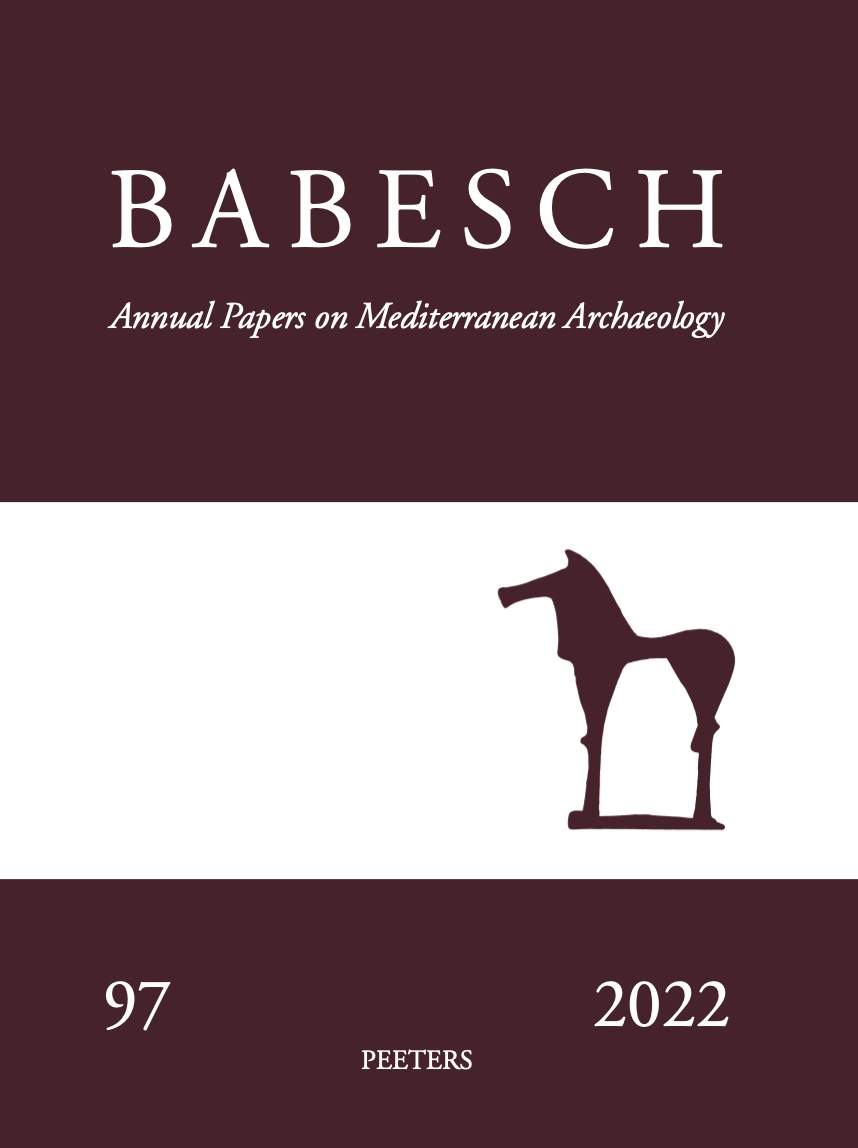 previous article in this issue previous article in this issue | next article in this issue  |

Preview first page |
Document Details : Title: The Settlement of Muro Terente, southern Italy Subtitle: Third Interim Report Author(s): BURGERS, Gert-Jan , YNTEMA, Douwe Journal: BABESCH Volume: 74 Issue: Date: 1999 Pages: 111-132 DOI: 10.2143/BAB.74.0.541751 Abstract : If we consider that urbanization has long been a major theme in the archaeology of ancient Italy, it may come as a surprise to find that not long ago a survey of early urban sites in Southern Italy demonstrated a striking lack of well-documented settlement contexts in most of the regions concerned (Gualtieri 1987). Many explanations can be given for this negative outcome, prominent among them the traditional fascination of Classical archaeology for a particular type of urban site, namely the Greek one. Although Italiote Greek towns are represented only in very small numbers, until recently they totally dominated scholarly attention, to the neglect of investigations into the neighbouring regions of Southern Italy. However, this focus is gradually being counterbalanced by an upsurge of non-Greek settlement research, revealing that urbanizing trends also occurred in the rest of the South; the small Greek enclaves along the Ionic coasts clearly do not constitute the only type of urban site in pre-Roman southern Italy. Accordingly, it is increasingly acknowledged that urbanization should be investigated as a differentiated phenomenon, with a range of variations in regional trajectories. These regional trajectories have come to represent a major research topic in Italian archaeology in general. The upsurge of settlement research has been particularly intense on the Salento peninsula. The undulating landscape of this heel of Italy is literally dotted with fortified ancient towns. One of these Salento oppidalies hidden under the surface of an estate conventionally known under the toponym of ‘Muro Tenente'. It is located some 18 km south-west of Brindisi. This 52 ha site constitutes the most recent research object of the long-term project that the Archaeological Institute of the Vrije Universiteit of Amsterdam (AIVU) has been carrying out in Salento since 1981. In view of the fact that the site is situated in open countryside and that it is formally protected from destructive agricultural activities, it is admirably suited for large-scale excavation aiming at gaining insight into its chronological, functional and spatial characteristics. With these excavations we wish to contribute to the general research theme discussed above. The present interim report is dedicated to the preliminary results of the 1997 and 1998 excavation campaigns at Muro Tenente (for previous reports, see BABesch 1996 and 1998). |
|


